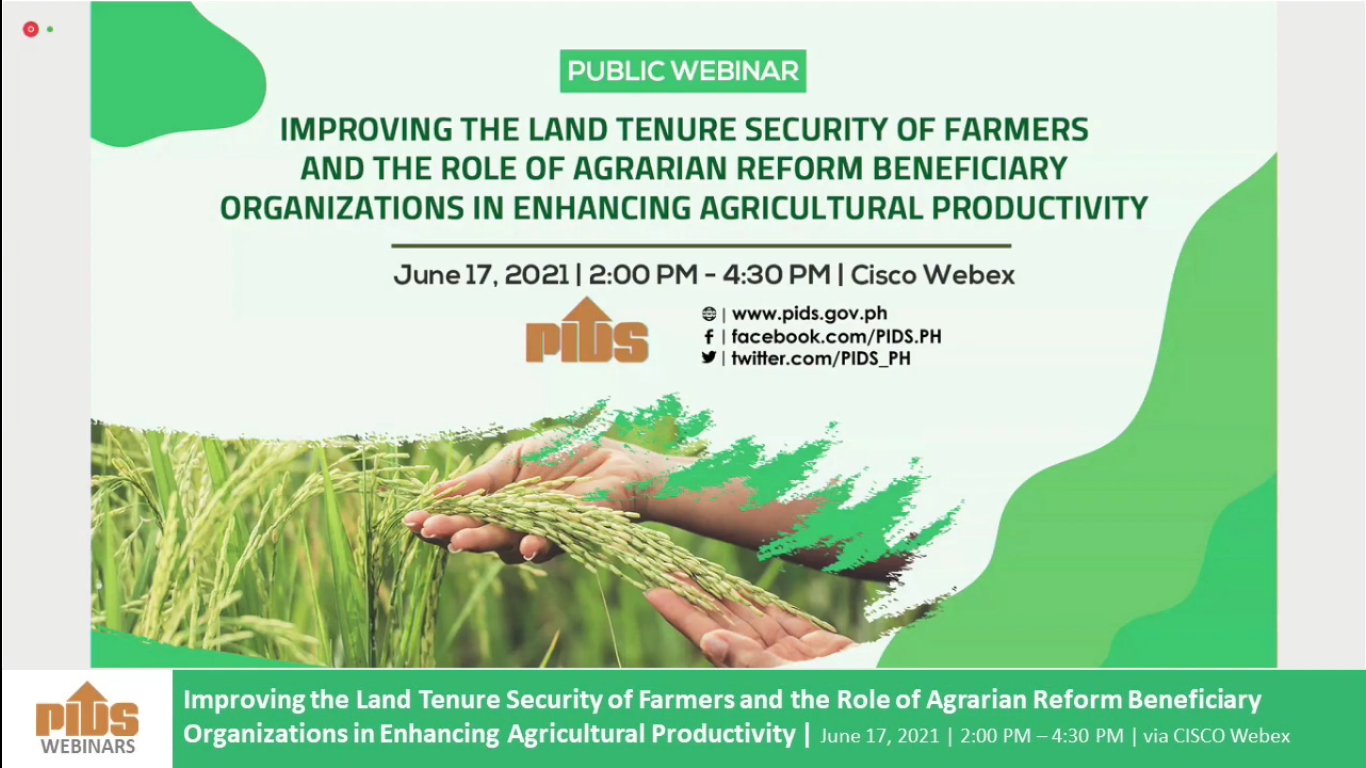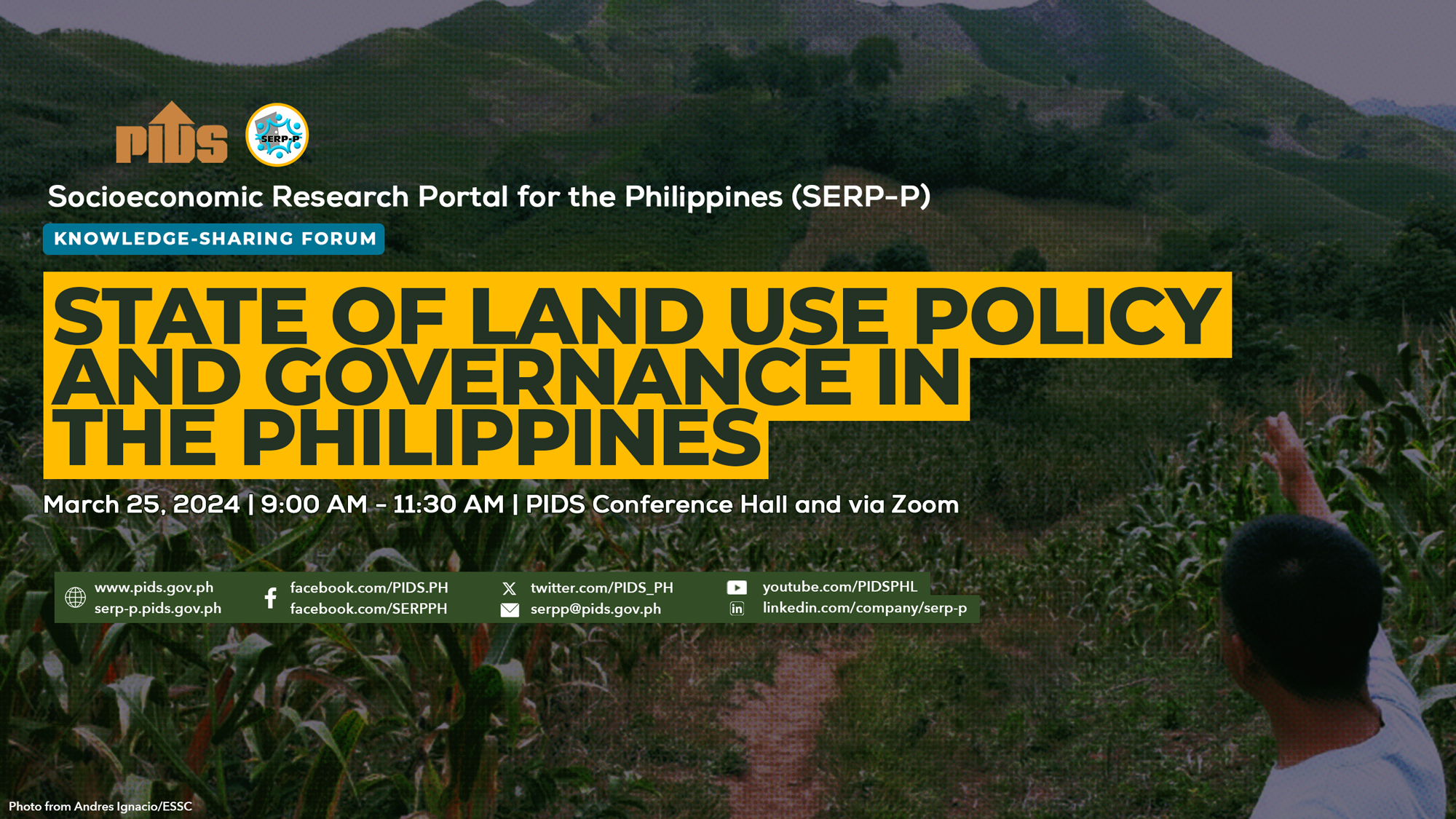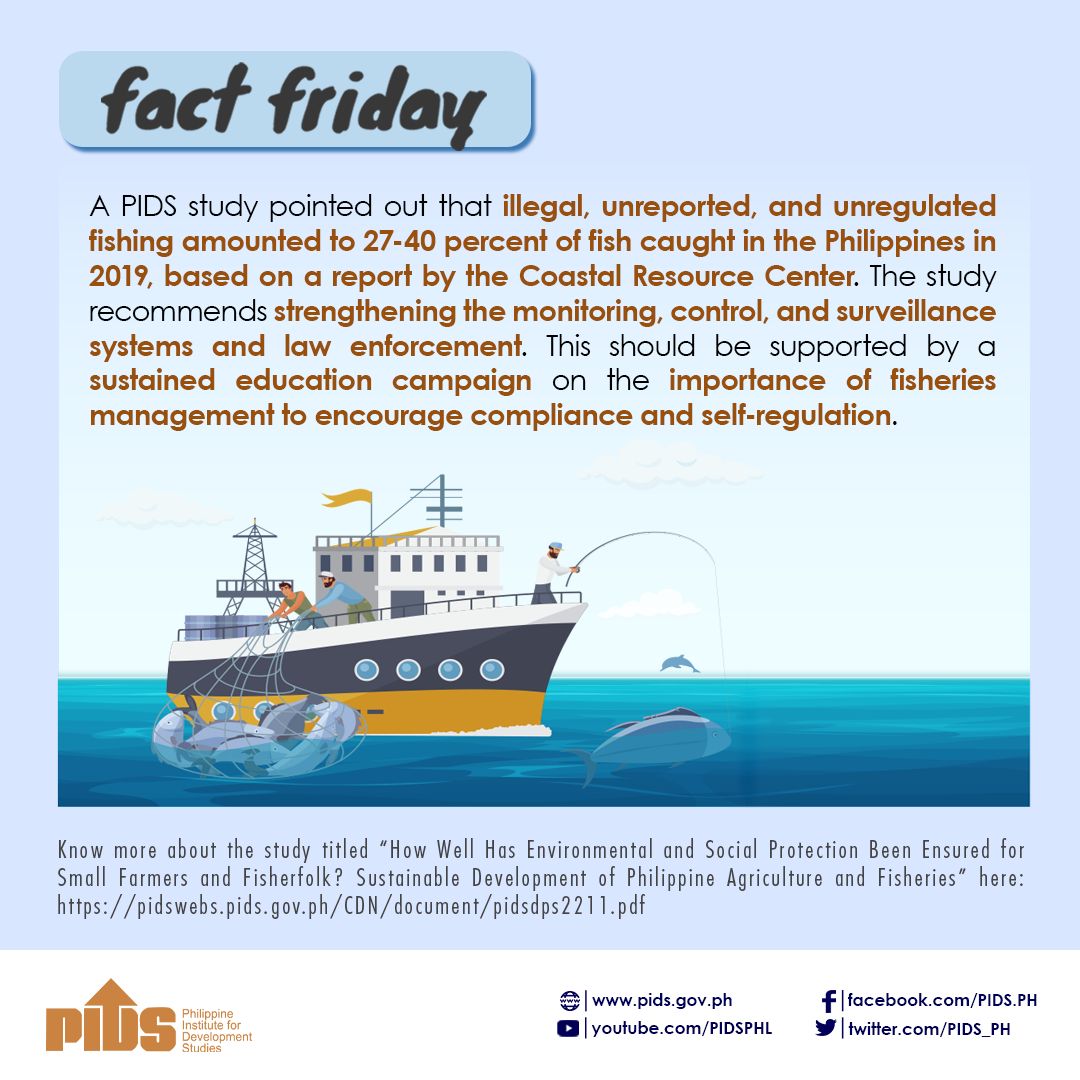IT’S nearing half-a-century and another administration, that of President Duterte, must still distribute hundreds of thousands of hectares of land to farmers.
The Duterte administration is eyeing to extend the coverage of the Comprehensive Agrarian Reform Program (Carp) to cover more private and public agricultural lands for distribution to landless Filipino farmers.
David Erro of the Department of Agrarian Reform said the DAR will now endeavor to cover more private and public agricultural lands and go beyond what were already distributed by the government through previous agrarian-reform programs. Erro issued this statement following Duterte’s pronouncement during the distribution of certificate of land ownership awards (CLOAs) in Mulanay, Quezon, on May 2, nearly 30 years after the late President Corazon Aquino signed the CARP law on June 10, 1988.
According to Agrarian Reform Secretary John R. Castriciones, Duterte is keen on land distribution. He cited two pronouncements by the country’s highest official: inclusion of Boracay Island and the remaining government-owned agricultural land in Mindanao under CARP coverage.
The DAR chief said a stakeholder summit in Davao to kick-start Duterte’s marching orders would be held soon.
While the DAR claims many farmers benefited from three decades of agrarian reform, many also believe that CARP and its successor the Comprehensive Agrarian Reform Program Extension with Reforms (CARPer), like Presidential Decree (PD) 27, are failures.
According to Marife M. Ballesteros of the government think tank Philippine Institute for Development Studies, “the framers of the law under Aquino combined both liberal and conservative policies on land reform.” She was referring to Republic Act (RA) 6657, or the Comprehensive Agrarian Reform Law (Carl), legal basis for CARP.
Still, the DAR points to a compilation of successful rags-to-riches stories and documented improved living conditions of formerly landless farmers who have become businessmen over the years through various support services provided by the agency.
Other sectors, however, say the agrarian-reform laws were and are flawed; meant only to protect landlords’ right more than providing social justice through the distribution of land to the landless farmers.
For them, CARP is dead and should no longer be resurrected.
Taking roots
BEFORE CARP was implemented by virtue of RA 6657, there was PD 27 signed by then-President Ferdinand E. Marcos on October 21, 1972. Land covered under PD 27 are tenanted rice and corn farms wherein landowners are allowed to retain 7 hectares.
Under CARP, the centerpiece of the first Aquino administration’s social justice program, private and public lands that are suited for agriculture are covered. These include areas dedicated to sugarcane, banana, pineapple and other agricultural plantations.
Among CARP’s initial objectives was to help agrarian-reform beneficiaries (ARBs) survive and make their CARP-awarded lands productive. Private landowners whose vast tracts of land were covered by CARP were entitled to just compensation under the program.
The Carl also allowed beneficiaries of the program to be coowners of the land through a stock distribution option (SDO) or to enter into a joint-venture agreement (JVA) with agricultural companies through ARB organizations or Arbos.
It is through Arbos that government agencies like the DAR course through support services.
To date, there are a total 5,451 Arbos nationwide. Of these, 4,923 or 90.3 percent are operational.
CARP’s many flaws were revealed during its implementation, as shown by the failure to meet the government’s own yearly distribution targets.
Eventually, CARP was extended in 1998 for another 10 years or until 2008, during which the land acquisition and distribution processes have finally started to gain momentum.
Still, because of many loopholes of RA 6657 and the strong resistance of big landowners, CARP fell short of covering around 1.2 million hectares of mostly private agricultural land at the end year of its first extension period.
Carp extension
IN 2009 CARP was extended anew for another five years, or until June 30, 2014, through RA 9700 or CARPer.
Beneficiaries of the CARPer are landless farmers, including agricultural lessees, tenants, as well as regular, seasonal and other farmworkers.
The distribution of CARP-covered lands or lands that have been issued with a notice of coverage (NOC) is still an ongoing endeavor.
Data from the DAR show that as of 2018, there are still 561,131 hectares of public, but mostly private, agricultural lands that remain undistributed. A bulk of these (520,674 hectares) are private agricultural land while 40,457 hectares are land that the government owns.
Erro, DAR undersecretary for policy, planning and research, admitted it will take at least a decade to distribute these lands given that the agency only targets an annual distribution of 50,000 hectares.
Distributing what remains to be distributed is easier said than done, Erro explained.
Landowners resisting CARP hire lawyers or use legal remedies so that they can dodge the program, he added. These moves derail the process of land acquisition and distribution. In many cases, it takes a decade or more before an issue is resolved—either by the DAR Adjudication Board or the courts—which often, worse of all scenarios, end up being archived at the Supreme Court.
The region with the highest land acquisition and distribution (LAD) balance is Region 6 (Western Visayas) with 134,621 hectares, Autonomous Region in Muslim Mindanao with 111,100 hectares, Region 5 (Bicol) with 78,558 hectares; and Region 2 (Cagayan Valley) with 43,367 hectares.
The distribution will continue since most of the private agricultural landholdings have been issued with an NOC as mandated by RA 9700.
LAD accomplishment
THROUGH the years, from PD 27 to CARP and CARPer, a total of 4,857,604 hectares of private and public agricultural lands have been distributed by the government.
The bulk of this (4,769,983 hectares) represents lands distributed through CARP and CARPer, while only 87,621 hectares were non-CARP.
Non-CARP refers to a portion of landholdings covered and determined to be non-CARP-able during the conduct of the survey only. This comprises area retained by the landowner, right-of-way and easement and road networks.
Under Marcos, a total of 70,178 hectares were distributed through PD 27.
By administration, the highest accomplishment in terms of land acquisition and distribution belongs to the administration of Fidel V. Ramos, having distributed a total of 1,900,039 hectares. President Gloria Macapagal-Arroyo’s administration followed with LAD accomplishment of 1,031,169 hectares.
The government of Corazon Aquino, herself belonging to landed families, distributed 848,515 hectares. The administration of her son Benigno cites a LAD accomplishment of 541,430 hectares.
While in office for two years, former President now Manila Mayor Joseph Estrada was able to distribute 33,389 hectares. Since assuming power two years ago, Duterte was able to distribute 45,264 hectares.
In her paper, titled “The Cost of Redistributive Land Reform in the Philippines: Assessment of PD 27 and RA 6657 (CARL),” Ballesteros concluded that government expenditure for land reform remained at less than 0.5 percent of the country’s gross domestic product.
CARP Phase 2
UNDER the Duterte administration, the DAR, being the lead implementing agency of CARP, will implement a two-pronged approach to separately cover more private and public agricultural lands for distribution to landless farmers.
For government-owned agricultural lands, Erro said the DAR is looking at identifying unclassified public lands or lands of the public domain with still no classification that may be converted into agricultural land.
This will be possible through the strength of a presidential proclamation (PP) to be drafted by the DAR and with Duterte’s final approval.
According to the Department of Environment and Natural Resources (DENR), the official total land area of the Philippines is 30 million hectares, which are legally classified as 15.8 million hectares, or 52.7 percent, forestland and 14.2 million hectares, or 47.3 percent, alienable and disposable land.
Of the 30 million hectares, only 50.2 percent are classified as forestland and 2.5 percent, or 750,000 hectares, are unclassified forestland.
The 50.2 percent classified as forestland include established timberland, national parks, game refuges/bird sanctuaries and wilderness areas; military and naval reservations (0.4 percent) and fishponds (0.3 percent).
Also for distribution are government-owned agricultural lands assigned to or under the name of various government-owned and-controlled corporations, agencies or institutions, including civil and military reservations.
Legal instruments
ERRO said distributing unclassified forestland through CARP will be through the strength of a presidential proclamation that will categorize unclassified forestland into agricultural land.
Meanwhile, distribution of government-owned agricultural lands, including civil and military reservations, will be based on the strength of an existing executive order—EO 407—signed by former President Benigno S. Aquino III, as amended by EO 448 and EO 506.
The BusinessMirror learned that under Aquino’s EO, there is no need to issue a notice of coverage and the government will just turn over the land and document ownership for distribution to farmers in case of government lands. EO 407, as amended, was issued while RA 6657 was still in effect, while RA 9700 (CARPer) is just an amendatory law and did not totally repeal RA 6657.
Government-owned agricultural land, alienable and disposable untitled public agricultural land, titled agricultural land foreclosed by government financial institutions, land reserved for public purposes covered by proclamation but no longer alienable and disposable for the purpose of reservation, may be covered under EO 407, as amended, and there will be no need for CARP or CARPer.
Erro said the DAR will closely coordinate with the DENR regarding the issue.
Power to classify
THE DENR’s Jonas R. Leones said Duterte has the power to classify previously unclassified lands as agricultural land.
This, Leones said, happened in Boracay when Arroyo signed PP 1064 in 2006 and which classified Boracay Island into both forestland and agricultural land.
PP 1064 declared 628.96 hectares of Boracay Island’s total 1,006.64-hectare land area as agricultural land, hence, alienable and disposable, and the remaining 377.68 hectares as forestland for protection purposes.
“When a land is unclassified, we treat it as forestland. But, of course, the President has the power to issue a proclamation that will classify it,” said Leones, DENR undersecretary for policy, planning, international affairs and foreign-assisted projects. “If he will, the unclassified land will become agricultural land and can be covered by CARP.”
Leones, who is also DENR Secretary Roy A. Cimatu’s spokesman, said the DENR is ready to work with the DAR in identifying areas that can be covered by the Duterte administration’s agrarian-reform program.
“What we need to do is identify these areas and make sure that they are suited for agriculture,” he said, although even land that is classified as a forest can be distributed by the DENR itself through CARP, after all, it is also one of the implementing agencies of the program.
As far as the DENR is concerned, “we have already completed [a] forest-delineation project covering the entire country.” Doing so made the identification of potential CARP-able area somehow easier and faster, Leones explained.
House help
AS for privately owned titled agricultural land, the CARPer deadline of June 30, 2014, for the issuance of NOC applies. Hence, there is a need for CARP extension law similar to RA 9700, he added.
“We will need the help of Congress to pass a law that will extend CARP,” Erro said.
He added that a draft bill will be prepared by the DAR to be co-authored by a legislator who will file it before the Committee on Agrarian Reform of the House of Representatives.
Asked as to how vast the DAR is looking into to add to the remaining LAD balance, Erro said it will be difficult for the agency to tell unless an inventory is conducted. But as for the private lands, it will take only a month for the DAR to identify these potentially private agricultural lands that are CARP-able or could be covered by the Carp.
He explained that the DAR will coordinate with the DENR to study how much of the country’s land of the public domain, including unclassified land or government-owned untitled public agricultural land, can still be distributed.
However, Erro was quick to say that it will be “thousands of hectares” more.
At the onset, he said at least 100,000 hectares of private agricultural land may be covered by the government under the new round of CARP implementation under the Duterte administration, but was quick to say that it will be up to the members of Congress who will deliberate the proposed CARP extension bill.
Cleansing process
DURING the distribution of CLOAs in Mulanay, Erro said the President expressed anxiety about implementing CARP because graft and corruption still exists in the bureaucracy.
He pointed to graft and corruption as one of the reasons CARP’s implementation was derailed. The agency lost the trust and confidence of farmers and landowners needed by the program because of graft and corruption, Erro said.
Hence, he noted the need to cleanse the ranks of the DAR.
To do so, Castriciones tapped Greco Antonious B. Belgica of the Presidential Anti-Corruption Commission (PACC), Erro said.
The DAR has already submitted 800 cases of personnel-related complaints to the PACC that Belgica said will be reviewed.
“We will conduct the review and, as far as the PACC is concerned, we will make a recommendation and submit it to the President,” Belgica said.
No to CARP
HOWEVER, farmers under the umbrella organization Kilusang Magbubukid ng Pilipinas (movement of Philippine peasants or KMP) said resurrecting a dead program—CARP—is not the way to go.
KMP has been and still is a vocal critic of CARP. The militant group insists that the program is a sham agrarian-reform program as it burdens the beneficiaries of paying for the land that the government projects to the media as being distributed for free.
KMP Secretary-General Danilo Ramos said that even with the distribution of land titles, whether through emancipation patent (under the late dictator’s PD 27) or CLOA (under RA 6657 and RA 9700), “many of these so-called proofs of ownership are the subject of cancellation, withdrawal or reversals.”
Ramos noted that every one of the CLOA recipients in Mulanay will pay around P600,000 per hectare to P700,000 per hectare of land to be awarded to them under CARP. Worse, he added, failure to pay for the monthly amortization means the cancellation of the CLOAs.
Even those with CLOA may not, in fact, become owners of the land awarded to them until they are physically installed on the CARP-awarded land, Ramos explained. In many instances, he said installation is delayed by the strong resistance of landowners.
Market-assisted
ACCORDING to Ramos, 30 years of CARP experience is enough to prove that “it is the longest, most expensive and bloodiest land-reform program in the world.”
“After 30 years—it will turn 30 years on June 10—CARP [and] CARPer [are] not the solution,” Ramos said. “The monopoly over CARP-covered lands of big landlords and now by agricultural corporations continues.”
He added the KMP considers CARP and CARPer as market-assisted land-reform programs.
“What the farmers want is ‘land to the tillers.’ The solution is already filed in the 17th Congress through Garb [Genuine Agrarian Reform Bill] or House Bill 555,” Ramos said. “Not CARP, not another extension.”
According to him, the problem with CARP is not simply the implementation “but the law itself.” He cited for an example the retention limit, wherein landowners are allowed to retain at least 5 hectares of land.
“The landowners’ sons and daughters are also entitled to the same privilege, which reduces the land area to be covered for land distribution,” Ramos explained.
Citing the stock-distribution option implemented at the Aquino clan’s Hacienda Luisita, he said CARP allowed landowners to maintain control over lands that are supposed to be distributed to beneficiaries of agrarian reform.
Besides, in other cases of land distribution under CARP, farmers will be made to sign a piece of document which will bind them to “buying” the land to be distributed to them by the government instead of giving it free, according to Ramos.
Grab Garb
RAMOS told the BusinessMirror that the Duterte administration is better off certifying the Garb as urgent and support the free distribution of land.
Moreover, Ramos said Duterte should keep its current track of pursuing peace talks with the National Democratic Front of the Philippines that he believes will resolve the armed conflict in the rural areas.
He added the KMP supports the implementation of the Comprehensive Agreement on Social Economic Reforms (Caser), which “encompasses historical and structural inequities in Philippine society and pave the way for genuine agrarian reform or the free distribution of land to landless farmers.”
Under Caser are priorities that revolve around asset reform and improvement of the human-resource base, including agrarian, fishery and urban land reform, agricultural development and private sector-led industrialization.
“What we need right now is to address the root cause of the armed conflict and the poverty through the peace process, through genuine agrarian reform and national industrialization,” Ramos said.
‘Quousque tandem’
DUTERTE is known for exercising what many of his supporters describe as “political will.”
In the case of implementing CARP, whether through presidential proclamation, executive order or through a law that will extend CARP or by any other name, agrarian reform, by any other means, to him, is a necessity and it means giving land to the landless, helping the poor and ensuring that these landless farmers have some form of security of tenure over a piece of land, which they have been tilling most of their life. The President is determined to issue the order and he might, sooner or later, do it regardless of what others believe.
The question is, in a throwback to the Roman Senate, quousque tandem.
For how much longer would farmers wait for another round of CARP?












